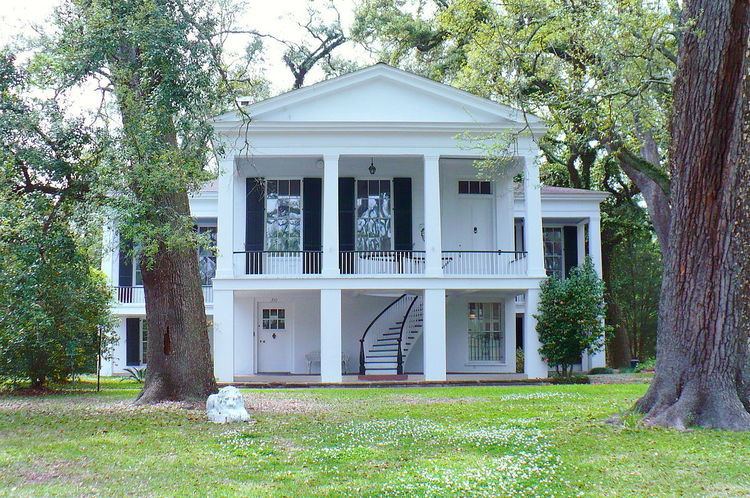Built 1833 Area 8,000 m² Phone +1 251-432-1281 | NRHP Reference # 71000104 Opened 1833 Added to NRHP 27 May 1971 | |
 | ||
Location 350 Oakleigh PlaceMobile, Alabama Address 300 Oakleigh Pl, Mobile, AL 36604, USA Hours Closed now Tuesday10AM–4PMWednesdayClosedThursday10AM–4PMFriday10AM–4PMSaturday10AM–4PMSundayClosedMonday10AM–4PMSuggest an edit Architectural style Greek Revival architecture Similar Old City Hall, Bragg–Mitchell Mansion, Fort Conde, Richards DAR House, Mobile Carnival Museum | ||
Oakleigh is a c. 1833 historic house museum in Mobile, Alabama, United States. It is the centerpiece of the Oakleigh Historic Complex, a grouping of buildings that contain a working-class raised cottage, Union Barracks, and a modern archives building. The name for the estate comes from a combination of the word oak and the Anglo-Saxon word lea, that means meadow. The complex is within the Oakleigh Garden Historic District, the surrounding district and neighborhood being named after the estate.
Contents
History
Oakleigh was built on 35 acres (140,000 m2) of woodland west of Mobile in 1833 by James W. Roper, a brick mason from James City County, Virginia. Also a dry goods merchant and cotton factor, Roper chose this site for his house because of its valuable clay pit. He operated a Water Street brickyard in downtown Mobile on the present-day site of the RSA Battle House Tower. While building Oakleigh, Roper lost his first wife, Sarah Ann Davenport, and a child. He remarried in 1838 upon completion of Oakleigh, and had four children with his second wife, Eliza Ann Simison.
The Panic of 1837 hit Roper and his business interests hard. After borrowing $20,000 to build the home, he was unable to pay back his loans, and the bank repossessed the home. Roper's brother-in-law, Boyd Simison, bought Oakleigh, half of the estate's acreage, and all but one of Roper's 18 slaves. He then allowed Roper and his family to live in the home rent-free until 1850. With his business interests failing, Roper followed his brother-in-law's example, becoming a lumber merchant and moving to New Orleans, Louisiana in 1850.
Alfred Irwin, treasurer of the Mobile & Ohio Railroad, purchased the house in 1852. During the American Civil War his wife, Margaret Kilshaw Irwin, defended the home against Union soldiers by proclaiming the property neutral territory on account of her British citizenship and hanging the Union Jack from the balcony. T.K. and Lee Fearn Irwin, their sons, were both veterans of the Civil War and gained local prominence in the late 19th century. Lee served as Mobile's assistant postmaster, president of the Cherokee Cotton Mills, and manager of the Mobile Oil Mills. His older brother T.K., once aide to Confederate president Jefferson Davis, went on to establish the Mobile Cotton Exchange and later became its president. T.K. married Mary Anna Ketchum. Much of their correspondence from the Civil War years and after remains on file at Oakleigh today. Oakleigh remained in the Irwin family until sold by Daisy Irwin Clisby, granddaughter of Alfred, in 1916.
Architecture
Built as a raised, galleried villa in the Greek Revival style, Oakleigh is one of the largest T-shaped homes in the state of Alabama. The unique shape of the home allows for cross-ventilation in Mobile's humid subtropical climate. The lower floor was originally a raised basement, likely built of handmade brick from the site, once functioned as a workspace and storage. The home's second floor contains the main living quarters. The quarter-turn, cantilever staircase rising to the front door was designed by James Roper.
The complex
The Oakleigh Historic Complex also consists of the Union Barracks, the Cox-Deasy Cottage, and the Minnie Mitchell Archives.
